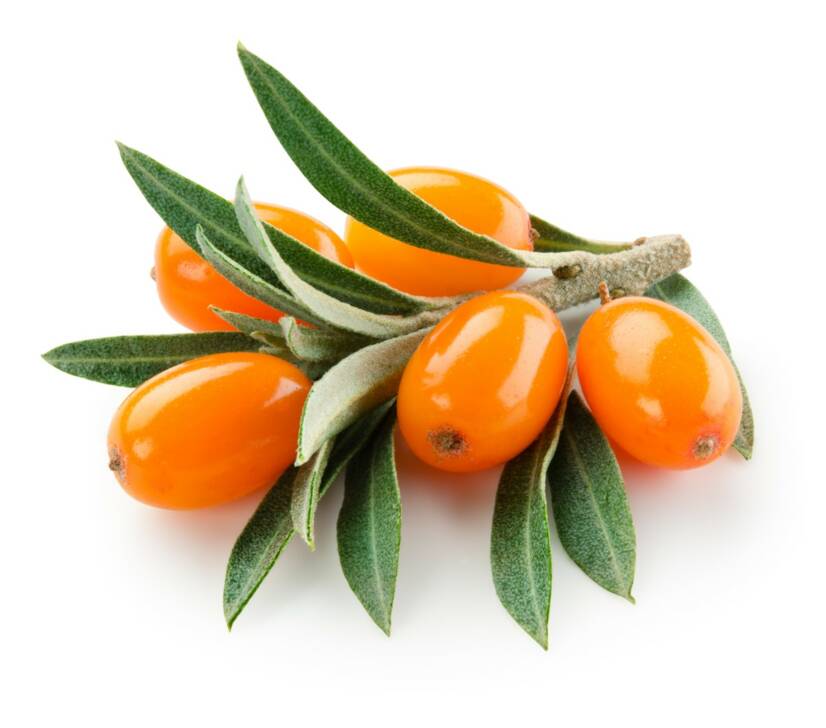- Herbarium or from alchemilla to jindava (Jaroslava Bednářová ) - characteristics of sea buckthorn
- Herbarium or nature in your kitchen (Jaroslava Bednářová ) - general information about sea buckthorn
- zlatyrakytnik.sk - characteristics, occurrence, collection, use of sea buckthorn
- zelenyjezko.sk - propagation and cultivation of sea buckthorn
What are the health benefits of sea buckthorn? How is it grown?

Sea buckthorn is attracting more and more people. The amazing beneficial effects of sea buckthorn have eliminated long-term health problems in many people. Therefore, there is a great interest in this plant all over the world.
Characteristics
How to grow sea buckthorn? What beneficial substances does it contain and what are its beneficial effects on the body? The answers to these and other questions can be found in the article.
Sea buckthorn is a dioecious shrub or tree native to the Himalayas.
Today it is already widespread all over the world.
It has secured a permanent place in many cultures, including ancient Greek mythology, for its beneficial effects.
Sea buckthorn is otherwise known as Hippophae rhamnoides.
Its height in Europe does not exceed 6 m.
The bark of the sea buckthorn is scaly, blackish-brown and has thorny branches.
Its leaves are narrow, less than 1 cm long and up to 8 cm long. They are lanceolate, entire, brownish-green on the face, brown to golden-felted on the reverse.
The male flowers grow in clusters and the female flowers in racemes.
One male tree can pollinate about seven females.
They flower from March to April.
Its fruit is a berry. It is orange to reddish in colour and 0.6 to 1 cm long.
Occurrence of sea buckthorn
Its native habitat is the Caucasus and Central Asia. It grows naturally in Siberia, Mongolia, China or India.
In Europe, it is found on the seashore and in the mountain ranges of the Alps, Apennines and Carpathians.
It is planted as an ornamental tree because it is unpretentious and hardy.
It can be used to harden slopes, but can also be grown in the garden for its fruit.
Differentiation of buckthorn plants
It is not difficult to distinguish a male plant from a female plant.
Male buds are noticeably larger compared to females.
The female buds are small and tightly attached to the annual.
Buckthorn is harvested from about 15 August to the second half of September and flowers in the second half of April.
Internal use
Sea buckthorn fruits are a rich source of vitamin C, carotene and a number of substances that are beneficial for the human body.
It is beneficial for:
- blood circulation
- respiratory tract
- the thyroid gland
- gallbladder
- digestive system
- musculoskeletal system
The drink can be prepared from dried fruits.
Sea buckthorn is also used to make sea buckthorn syrup, which, when used correctly, has beneficial effects on health.
It is recommended especially for overall vitality, immune system, recovery, fatigue, stress, to improve concentration and increase work efficiency.
Apart from its fruits, we can also use the oil that is extracted from the seeds.
We can apply it on wounds, burns and general regeneration of the body skin. It heals inflammations internally and also has antidepressant effects.
A tincture or decoction is prepared from its leaves and bark.
Rinsing with a decoction of the leaves helps to slow down hair loss.
The use of sea buckthorn not only in the kitchen
The fruits are very sour, so they are often eaten raw with sugar. However, some people enjoy them for their sour taste.
It can be processed in many ways, for example:
- jams
- compotes
- juices
- syrups
- wines
- liqueurs
- sauce flavourings
Consumption of one fresh fruit will cover the daily dose of vitamin C.
The fruit should not be exposed to higher temperatures to preserve the vitamin C content.
Cooking loses some of the value of the fruit.
Sea buckthorn oil is cold pressed and contains vitamins A, B1, B6, C, D, E, F, K, P, beta-carotene, folic acid, organic acids, essential and omega-3, 6, 9 fatty acids.
Because sea buckthorn is rich in biologically active substances, it is of interest for use in medicine, food and cosmetics.
Use of sea buckthorn as a food
When the fruit is cooked, most of its useful substances "evaporate".
Therefore, when choosing products, it is most sensible to give preference to those that have a low-temperature drying or cold-pressing process.
In traditional medicine, sea buckthorn can be used internally, e.g. as a tea, juice, syrup for infections, colds, flu and others.
Nutritional values of sea buckthorn
| Energy value | 390 KJ |
| Protein | 2 g |
| Carbohydrates | 8 g |
| Fats | 6 g |
| Fibre | 3 g |
It is rich in various minerals, such as:
- iron
- calcium
- potassium
- sodium
- magnesium
- phosphorus
External use
It is popularly used in cosmetic preparations.
Sea buckthorn oil absorbs ultraviolet radiation.
Therefore, it is especially useful for promoting healthy skin, helping to heal after sunburn or during a bout of skin disease.
It is most useful in cosmetic products that provide protection from sunlight.
Harvesting and storage
We pick orange sea buckthorn berries.
Depending on the variety, they ripen from late July to early October.
The berries must not be overripe, as this reduces the vitamin C content.
Hand-picking is very difficult because of the thorns they have. Therefore, sometimes whole branches that are covered with berries are cut off.
They can be frozen. Then the fruit is easily shaken off, or the juice is pressed directly on the branches.
Sea buckthorn is grown as a tree or shrub as a fruiting ornamental tree, which is relatively difficult to harvest and takes a long time to bear fruit (6 to 8 years).
Growing sea buckthorn
The most important thing for growing buckthorn is to choose the right variety.
Its varieties are diverse, differing not only in taste but also in fruit size.
Sea buckthorn likes sunny positions and adapts to different soil types.
Permanently waterlogged soil and swamps do not suit this type of fruit bush. Its leaves may turn yellow or the plant may die.
Plants are sold at 2 to 3 years of age.
As the buckthorn is a deciduous fruit bush, its specific feature is its fruiting period. It does not start fruiting until it is three years old, sometimes as late as six years old.
This plant is not very demanding to plant.
When planted, it is placed in a sunny, leeward position because of the possibility of its fruit dropping.
As sea buckthorn has an extensive root system, plant it in loose soil.
Propagation of sea buckthorn
The first method of propagation is from summer cuttings.
These cuttings are prepared in late May or early June.
The most suitable length of cuttings is about 15 cm. They are placed in a greenhouse or greenhouse for rooting and planted out from early autumn.
The bush begins to fruit in the third year.
The second method of propagating sea buckthorn is by division.
In this method of propagation it is most important to have a male and a female plant, otherwise there will be no crop.
The well-known varieties are Leikora (female) and Pollmix (male).
Many new varieties of sea buckthorn have been bred.
Each plant produces only male or female flowers after reaching maturity, as it is a so-called dioecious plant.
It is wind-pollinated and therefore sufficient distance between male and female plants is important for fruit ripening.
Interesting resources
Related










